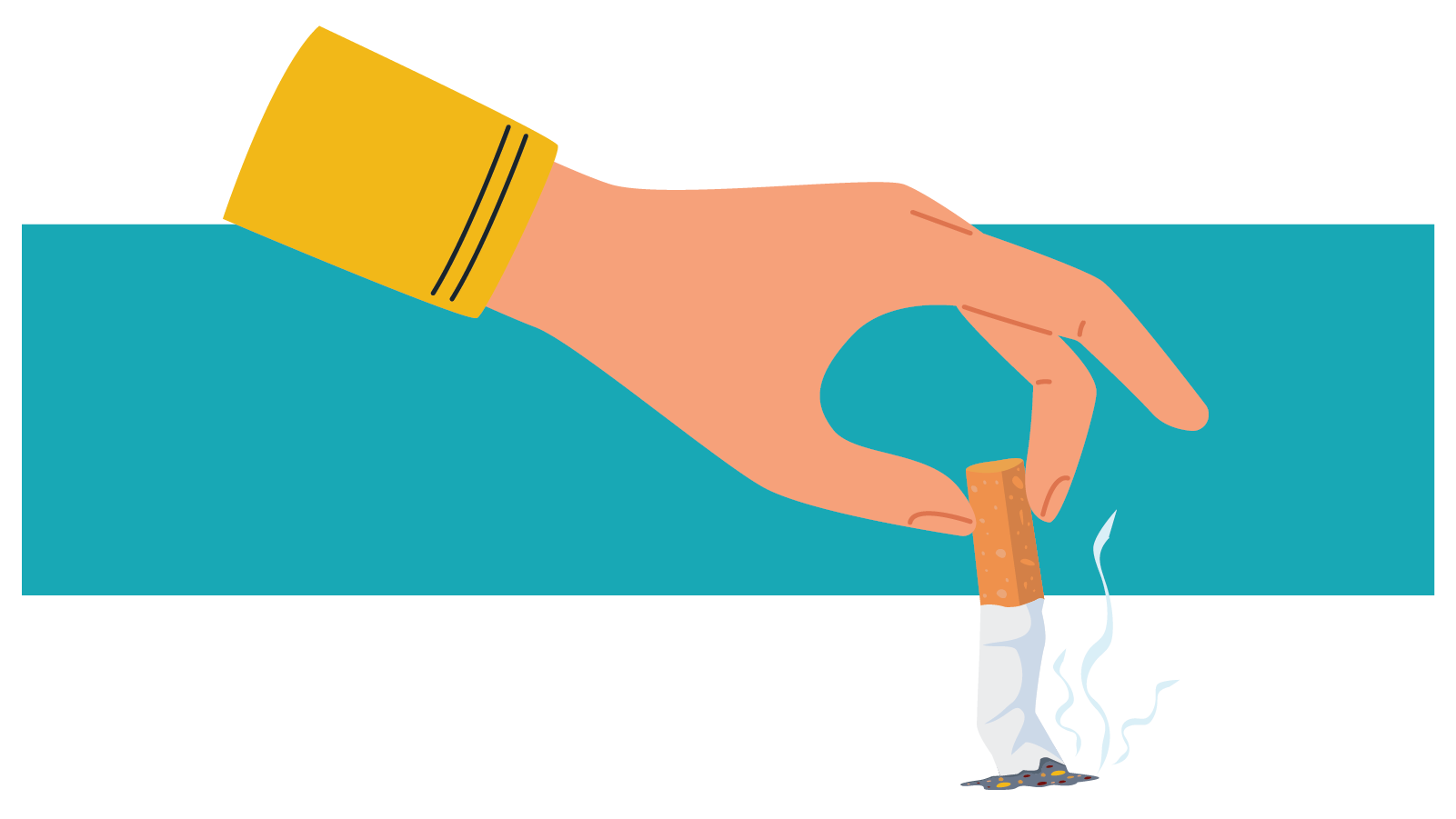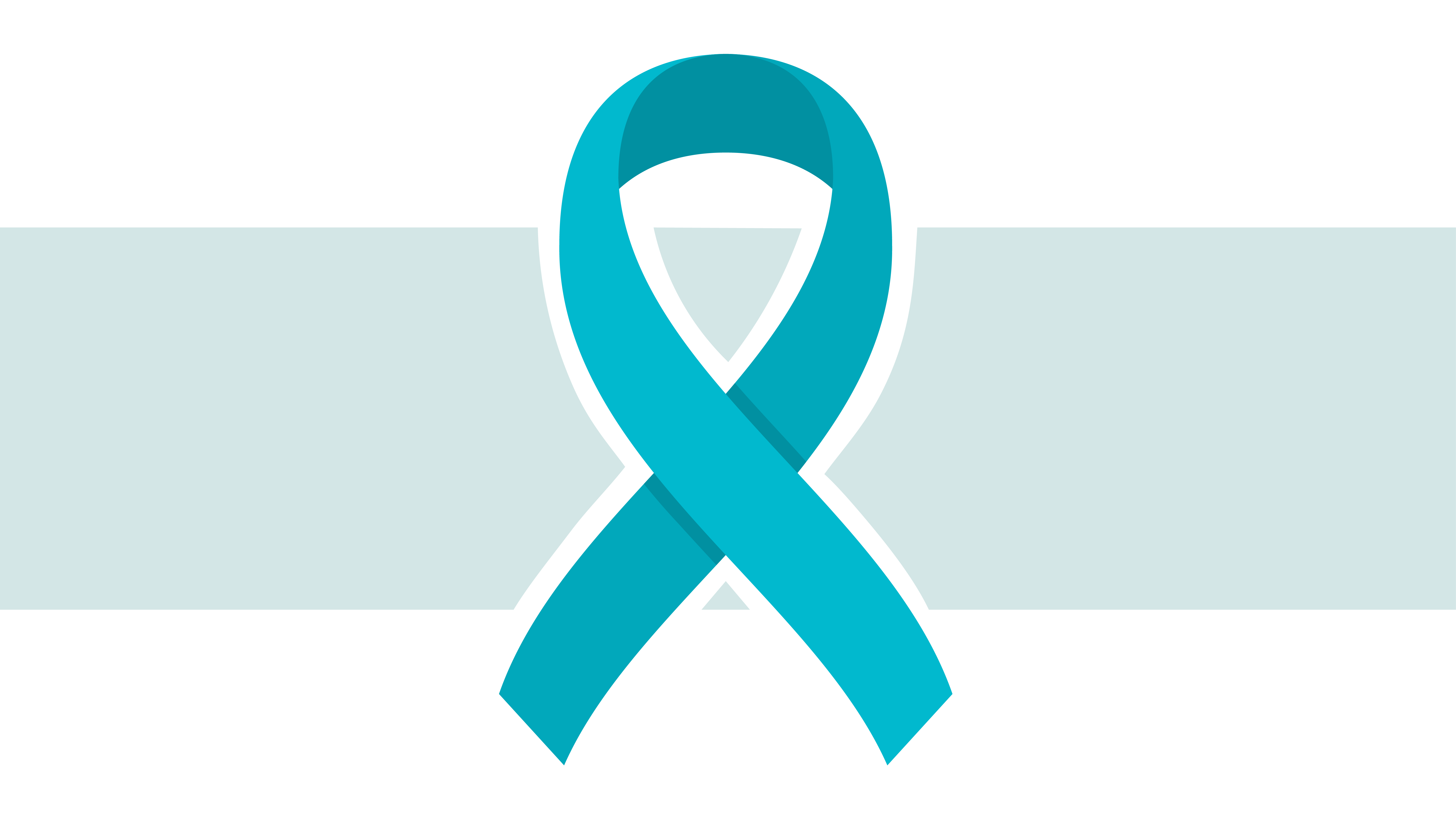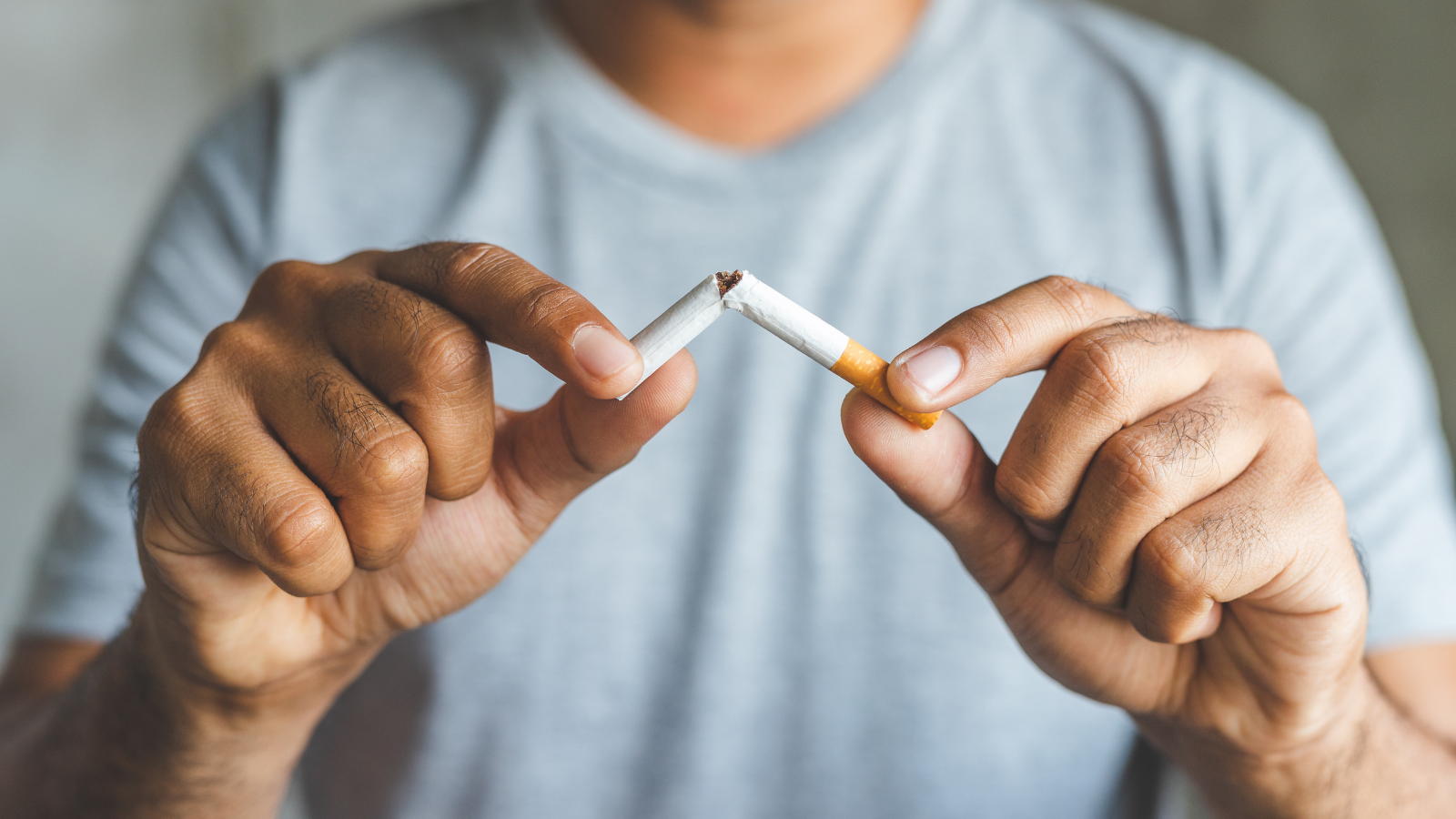
In recent years smoking has regained popularity due to e-cigarettes and vaping. According to the American Lung Association, smoking is the leading cause of preventable disease and death in the United States and accounts for about half a million deaths each year.
Our lungs are an essential part of maintaining the function of the body. Humans breathe in and out between 12-15 times per minute. Inhaling cancer-causing substances, called carcinogens, damages the cells in the lining of the lungs. The carcinogens end up changing the DNA of the cells, causing them to grow uncontrollably, forming tumors.
Smoking Cessation
Smoking cessation, or quitting smoking, is the best way to reduce the risk of developing cancer.
Great American Smokeout
Each November, on the third Thursday of the month, the American Cancer Society holds an annual intervention event. Hospitals and companies across the country participate by posting on social media, hosting info sessions, starting a fundraiser, and bringing general awareness about the dangers of smoking, in hopes of helping those who smoke take the first step in quitting.
Most smokers want to quit, but it usually takes multiple attempts; seven in ten smokers want to quit, but only one in ten quit successfully. Because it is so addictive, quitting is impossible, but what is the point of quitting if only one in ten is successful in quitting?
Who is at risk of developing lung cancer? Signs, Symptoms and Lung Diseases
The American Cancer Society recommends yearly cancer screening for people who are 55 to 74 years old. According to the US Preventative Services Task Force, it is also recommended that people who have a 20 pack-year or more smoking history, smoke now or who have quit within the past 15 years, and those between the ages of 50 and 80 years old receive yearly screenings. Lung cancer has a reputation for being a smoker's disease, however according to Harvard Health Publishing, 10 to 20 percent of people with lung cancer have never smoked.
Knowing the symptoms can lead to earlier detection and treatment:
- Difficulty catching your breath
- Uncontrolled cough
- Coughing up phlegm with blood in it
- Shoulder, back, or chest pain
- Many other symptoms
There are two main types of lung cancer, non-small cell lung cancer (NSCLC) - about 80-85% of lung cancers, and small cell lung cancer (SCLC) - about 1-15% of lung cancers. Always talk to your doctor about your concerns and symptoms. Early detection and treatment are key to saving your life.
References:
Home | American Lung Association
Lung Cancer Guide | What You Need to Know | American Cancer Society

The Lifesaving Role of Working Smoke Alarms During Fire Prevention Week
The U.S. Fire Administration has reported 1,403 home fire deaths so far in 2024. Every year, Fire Prevention Week serves as a reminder of the...

Guard Against Cervical Cancer: The Importance of Pap Smears
Cervical cancer is a silent threat that affects women around the world, but the good news is that we have a powerful weapon in our arsenal – a Pap...

